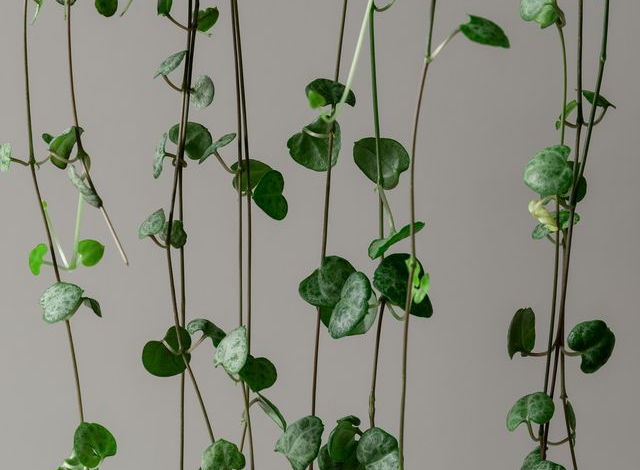Buying Chain of Hearts From an Online Plant Shop? Note These Care Tips

In recent years, the chain of hearts plant has skyrocketed in popularity, and for good reason. While it has been around for a while, houseplant enthusiasts have just lately realised what a cute tiny trailing vine it is. This plant belongs to the Ceropegia woodii subgenus. This charming little plant is also known as the rosary vine, hearts on a thread, or string of hearts. In this post, we have discussed some care tips if you are considering buying this plant from a nursery or an online plant shop.
Tips to Keep Your Chain of Hearts Thriving
Light Requirements
The plant requires bright, indirect light to thrive. This means it should be placed in a spot where it can receive plenty of natural light, but not direct sunlight. Direct sunlight can cause the leaves to burn, so it’s best to place the plant near a window that receives filtered or indirect sunlight. In general, the plant will do well in a spot with bright, consistent light, but it can also tolerate some shade or lower light conditions. It’s important to monitor the plant’s response to light and adjust its placement as needed to ensure it is getting enough light to thrive.
Temperature and Humidity
The string of Hearts plants prefer moderate temperatures and can tolerate a wide range of humidity levels. Ideally, the plant should be kept in a room with temperatures between 60-85°F (16-29°C). It is important to keep the plant away from cold drafts, as this can cause the leaves to wilt and drop.
Watering
The Chain of Hearts plant is drought tolerant and can survive in periods of low water availability. It is important not to overwater the plant, as this can cause root rot. The houseplant should be watered when the top inch of soil feels parched to the touch. It is important to use a well-draining soil mix and to allow excess water to drain out of the pot.
Fertilising
The plant does not require frequent fertilisation, but it can benefit from occasional feedings during the growing season (spring and summer). It’s important to use a balanced houseplant fertiliser that provides equal amounts of nitrogen, phosphorus, and potassium. A good rule of thumb is to dilute the fertiliser to half the recommended strength to avoid over-fertilization, which can burn the plant’s roots and cause damage. You can apply the fertiliser every 2-4 weeks during the growing season, depending on the strength of the fertiliser and the needs of the plant.
Propagation
The plant is relatively easy to propagate, and there are a few different methods you can use to create new plants.
- Stem Cuttings: Take a stem cutting that is at least 4-5 inches long, and make sure it has a few nodes (where the leaves attach to the stem). Remove the lower leaves, leaving 2-3 leaves at the top of the stem. Place the cutting in a jar or vase filled with water, making sure the bottom of the stem is submerged. Once the roots are about 1 inch long, you can plant the cutting in soil.
- Division: You can divide a mature plant by carefully separating the roots and repotting the sections in new pots. This is a good option if your plant has become too large for its current pot or if you want to create multiple plants from one.
- Leaf Cuttings: Take a healthy leaf from the plant and cut it into several sections, each with a vein running through it. Place the cuttings in moist potting soil, with the cut ends buried in the soil. Keep the soil moist and wait for new shoots to grow from the cuttings.
The Bottom Line
The Chain of Hearts plant is a unique and easy-to-care-for houseplant that can bring a touch of beauty to any room. By following the above care tips and the ones told by the nearest nursery or online plant shop, your plant stays healthy and happy.





